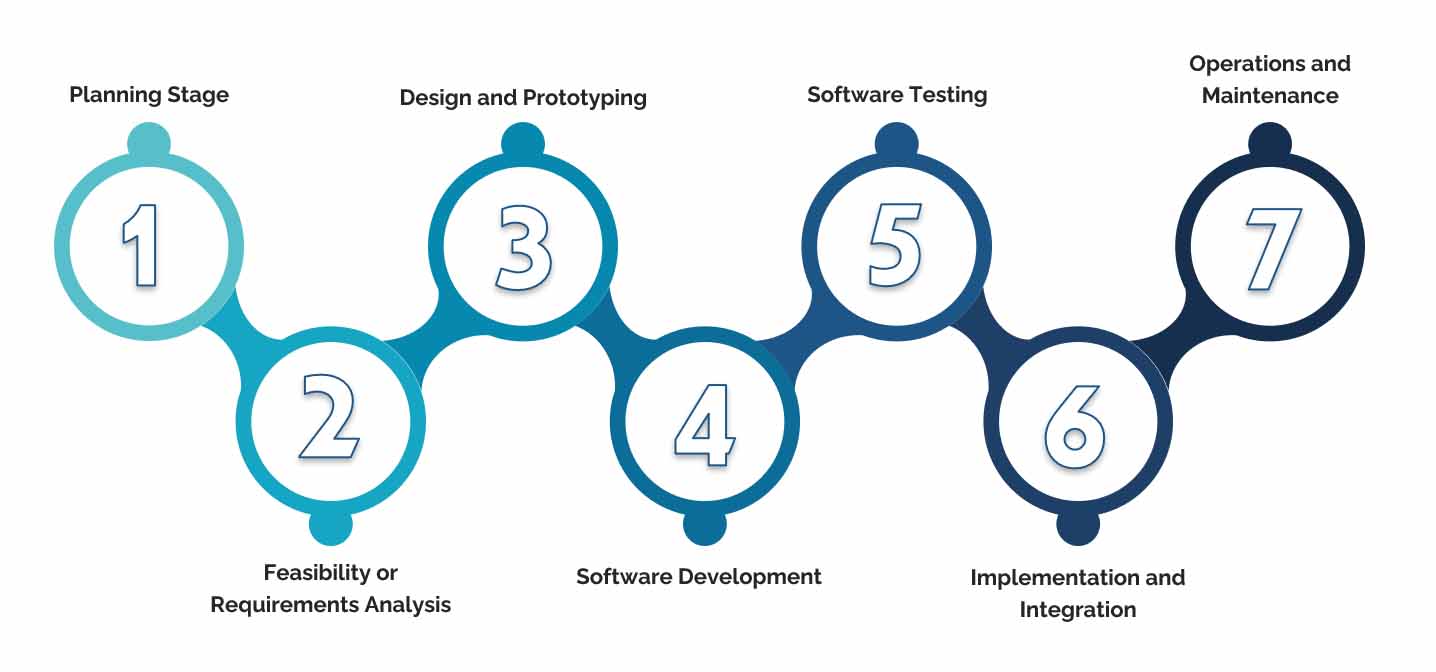
The software development life cycle is vital for the development of any software system. It gives a framework for a standard set of deliverables and activities and is a mechanism for tracking and controlling the project. A focus on the SDLC (software development life cycle) can ensure high quality, better functioning software. The SDLC helps schedule planning, building, testing, and maintaining an pplication. It allows you to reduce project risk and project management plan overhead. SDLC enhances client relations and improves the development speed, making the entire process highly efficient.

Now let’s take a closer look at each stage individually.
We nedd a plan during this initial stage of the project, the team sits together with the project and product manager to agree on a number of factors that will influence the development process.
The IT teams and other divisions in the company must also discuss the strengths, weaknesses and opportunities of the product. Software development processes start only if the product satisfies every parameter necessarily for its success.
The requirement analysis stage involves developers, users, testers, project managers and quality assurance. This stage includes gathering all the specific details required for a new system as well as determining the first ideas for prototypes.
This includes all the specifications for software, hardware, and network requirements for the system they plan to build. This will prevent them from overdrawing funding or resources when working at the same place as other development teams.
With the requirements in place, it’s time to start designing what this software will look like and how it will function. Software design is an important component of the product development cycle after analyzing the requirements and planning about it.
This phase of the software development life cycle focuses on creating software architecture, prototype, and user experience design. Let’s take an overview of what these activities have:
Software Architecture: Refers to creating an organized flow of elements in a software code for quality assurance, clarity, and accessibility. You can refer to software architecture as the blueprint for the development team.
Prototype: The UI/UX team builds a prototype version of the software to validate its look and flow of design elements. It lets the development team and the stakeholders visualize the overall look and feel of the software.
After completion of the designing stage, and moving to the coding phase. Here the developers have to write code and build the required system. In this stage, the actual coding is done and the code is produced based on the design specifications. This is the most critical and also the longest stage in the software development life cycle.
This stage is completed before releasing the product to users. In this stage, all variants of the functional testing such as integration testing, unit testing, system testing, acceptance testing, and non-functional testing are done. The goal of the testing phase is to ensure that every feature works as expected. Once the features are complete and the product is deemed ready to go, you’ll need to do another round of more in-depth testing.
After all the errors from coding are removed during the testing stage, the next stage is termed as the deployment stage. The finalized code is implemented into the software and then deployed or delivered to the customers to be used. This stage of software development isn’t done with the push of a button. It’s done step by step with an implementation plan.
Teams should stay watchful since deployment is a complex process. If there is any possibility for changes or there are possible bugs caught during implementation, it is immediately reported to the team that engineers its errors to work fine in real-time. Often, several systems and devices must be integrated and in some cases, more time and effort can be necessary to complete this stage successfully.
The ending of one phase is just the beginning of another, and that goes for post-launch as well. Once the customers start using well-developed software, the actual issues start surfacing with time. This doesn’t mean that the software will get corrupted. However, it might require occasional issues surfacing time and again. This particular process is termed as maintenance for the finalized product or software.